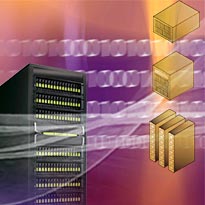Home
From Wikibon
| Line 29: | Line 29: | ||
[[Image:Storage_virtualization.jpg|left|250px]] | [[Image:Storage_virtualization.jpg|left|250px]] | ||
| | | | ||
| - | ==[[ | + | ==[[Planning a green storage initiative|Planning a Green Storage Initiative]]== |
| - | <p style="color: #666;"> | + | <p style="color: #666;">Fluctuating energy prices have heightened electricity and energy consumption as a major issue within the technology community. IT is a significant consumer of energy and IT energy costs have been rising disproportionately because of continued investment in denser IT equipment. Estimates from the EPA and others indicate that IT will account for 3% of energy consumption by 2012. |
| + | |||
| + | While technology changes have decreased footprint, power loading (amount of power required for a square foot of data center space) and heat load (the amount of heat that has to be removed from a square foot of data center space) have both escalated dramatically. The result is higher energy costs to provide power and extract heat from the data center, and lower utilization of data center floor space because of power and cooling limitations. The technology trends are toward higher heat and power loading, which will exacerbate the problem. | ||
</p> | </p> | ||
| - | [[ | + | [[Planning a green storage initiative | read more...]] |
|} | |} | ||
Revision as of 21:46, 30 December 2008
Latest Peer Incites:
1. Six Wikibon experts break down EMC's recent analyst event (23 Mins)
2. Grant, a Sr. Storage Admin at a large bank discusses how heterogeneous storage virtualization can help reduce the budget for 2009. (20 Mins)
WikitipHolographic storageThe competitive landscape for InPhase has changed over the past few months with Plasmon, the UDO champions, imploding and the Blue Ray folks struggling with the negative perception of optical as a legitimate enterprise class data storage technology. Going forward the challenge faced by InPhase will be to drive separation between holographic and traditional MO technology by building a unique identity (brand) and credibility (use cases) to convince the enterprise storage buying public to accept holographic as a legitimate storage option for enterprise data. Neither a simple or speedy objective. |
Featured Case StudyFinancial giant goes greenThe corporate IT group of a very large, worldwide financial organization with 100,000 employees, has initiated an ongoing “greening” process. This is focused largely on reducing energy use both to decrease the corporation's carbon footprint while creating a net savings in operational costs over the lifetime of new, more energy-efficient equipment, including new storage systems. This effort is not viewed by the IT administration as a one-time project but rather as a perpetual process of evaluating new technology in part on its energy efficiency and introducing it into the corporate data centers to replace aging systems as appropriate. |
|
Featured How-To Note |
Planning a Green Storage InitiativeFluctuating energy prices have heightened electricity and energy consumption as a major issue within the technology community. IT is a significant consumer of energy and IT energy costs have been rising disproportionately because of continued investment in denser IT equipment. Estimates from the EPA and others indicate that IT will account for 3% of energy consumption by 2012. While technology changes have decreased footprint, power loading (amount of power required for a square foot of data center space) and heat load (the amount of heat that has to be removed from a square foot of data center space) have both escalated dramatically. The result is higher energy costs to provide power and extract heat from the data center, and lower utilization of data center floor space because of power and cooling limitations. The technology trends are toward higher heat and power loading, which will exacerbate the problem. | |||



